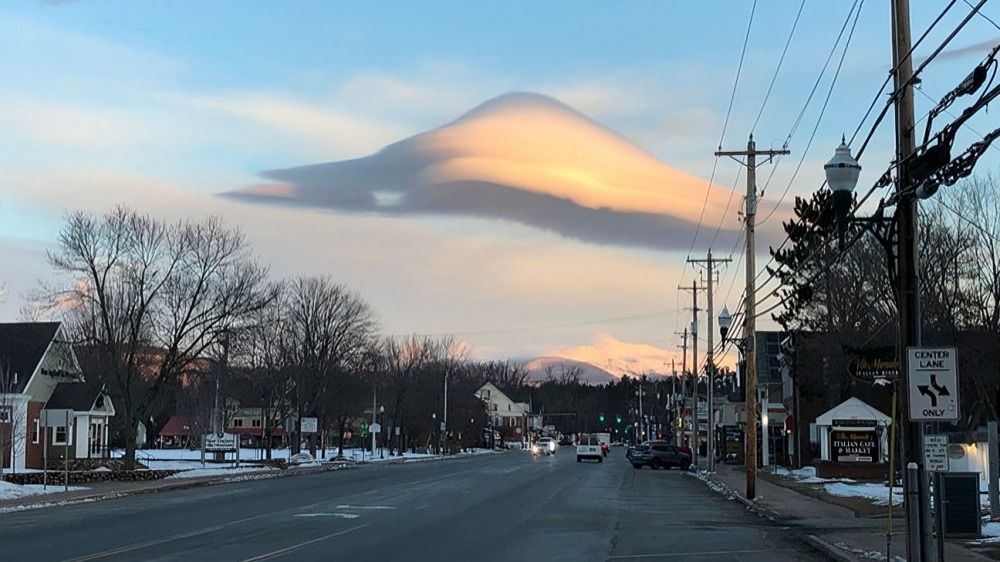
“
Clouds are more than just beautiful formations in the sky; they are essential to our planet's weather and climate systems. These floating wonders are composed of tiny water droplets or ice crystals and play a crucial role in the Earth's water cycle. From the fluffy cumulus clouds to the towering cumulonimbus, each type has its unique characteristics and significance. 1
1
1
”
Clouds are made up of tiny water droplets or ice crystals that are so light they can float in the air. Despite their appearance, clouds can weigh tons, depending on their size and water content. 1
Clouds form when warm, moist air rises and cools, causing water vapor to condense into tiny droplets or ice crystals. This process creates the fluffy, floating formations we see in the sky. 2
The different shapes of clouds are due to the varying altitudes and atmospheric conditions in which they form. For example, cumulus clouds are puffy and low, while cirrus clouds are thin and high.3
Thunderstorms are associated with cumulonimbus clouds, towering giants that can reach over 12 kilometers (7.5 miles). These clouds can produce heavy rain, hail, and even tornadoes.4
Clouds play a crucial role in regulating Earth's temperature by reflecting sunlight into space, which cools the planet, and trapping heat, which warms it. This balance helps maintain the climate. 5

Some clouds, called noctilucent clouds, form at the edge of space, around 80 kilometers (50 miles) above the Earth. They are visible only at twilight and glow with an eerie, electric-blue light.
The color of clouds is influenced by the angle of sunlight and the thickness of the cloud. While clouds are usually white, they can appear gray, blue, red, and orange during sunrise or sunset. 6
Contrails, the thin lines of clouds that form behind airplanes, are created when hot, moist air from jet engines mixes with the cold, low-pressure atmosphere, causing water vapor to condense into ice crystals. 7
Clouds can carry electric charges, which build up during a storm and eventually discharge as lightning. The lightning can then heat the air around it to temperatures five times hotter than the surface of the Sun.8
Virga is a phenomenon where rain falls from a cloud but evaporates before reaching the ground. This creates a streaky, wispy appearance beneath the cloud, often seen in dry, desert regions. 9

Mammatus clouds are pouch-like formations that hang from the base of a cloud. These unusual clouds are often associated with severe weather and can appear ominous, signaling the potential for thunderstorms or tornadoes.
The rarest cloud type is the Kelvin-Helmholtz cloud, which looks like a series of rolling ocean waves in the sky. These clouds form when two layers of air move at different speeds, creating a wave-like pattern. 10
The phrase "every cloud has a silver lining" comes from the appearance of clouds during sunrise or sunset when the Sun shines from behind, creating a bright outline around the darker cloud. 11
The study of clouds is called nephrology, a branch of meteorology. Nephrologists classify clouds based on their appearance and altitude, which helps predict weather patterns and understand atmospheric conditions. 12
Fog is essentially a cloud that forms at ground level when water vapor condenses near the Earth's surface. This process creates a dense mist that hangs low, significantly reducing visibility and giving the landscape a mysterious appearance. 13

Lenticular clouds are lens-shaped formations that often form over mountains. These clouds are sometimes mistaken for UFOs because of their smooth, saucer-like appearance and can signal strong turbulence for pilots.
You might wonder how clouds float if they're made of water. Clouds consist of tiny, lightweight water molecules with a large surface area, preventing them from falling. Warm air rising in the atmosphere helps keep clouds afloat. 14
Clouds are essential for the Earth's water cycle. They transport moisture from one place to another and release it as precipitation, providing the freshwater necessary for ecosystems and human survival. 15
Clouds can travel great distances, often crossing oceans and continents. High-altitude clouds, like cirrus clouds, can move at speeds of up to 100 miles per hour, carried by strong upper-level winds. 16
Modern weather satellites use advanced imaging technology to monitor and analyze cloud formations, aiding in the prediction of weather patterns and the tracking of storms around the globe for more accurate forecasts. 17


